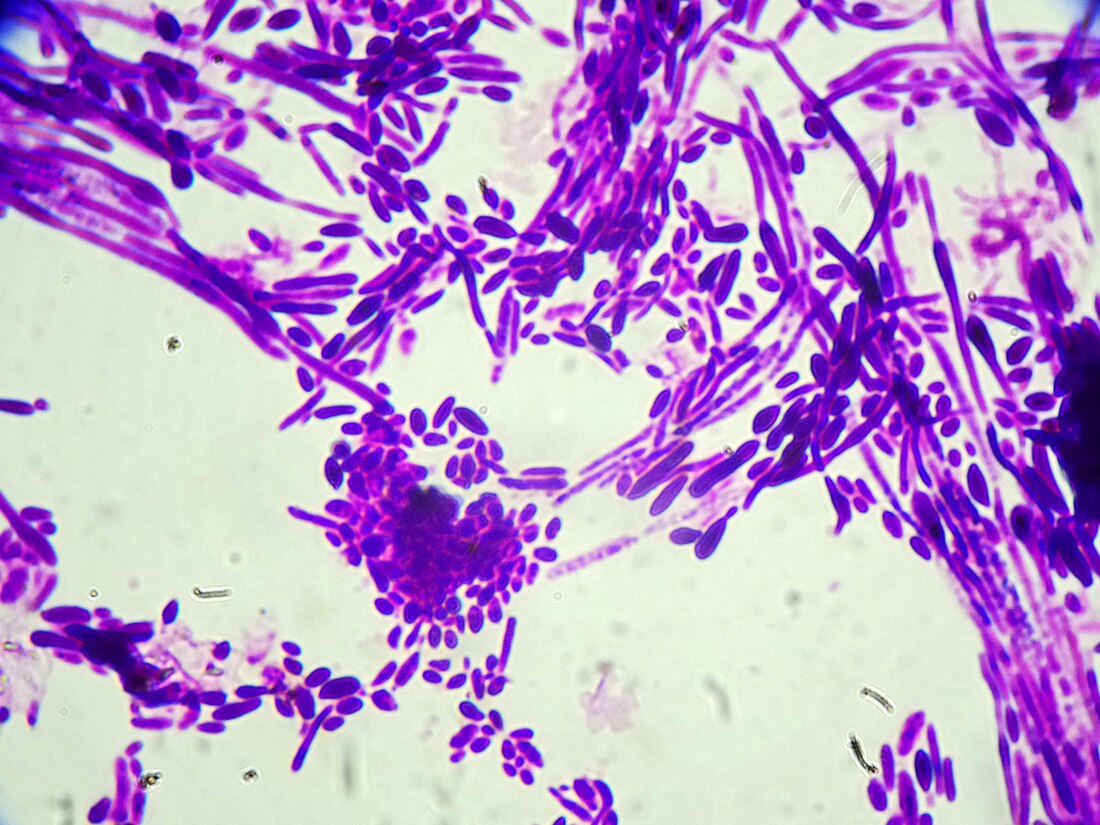Top Qs
Timeline
Chat
Perspective
Candida dubliniensis
Species of fungus From Wikipedia, the free encyclopedia
Remove ads
Candida dubliniensis is a fungal opportunistic pathogen originally isolated from AIDS patients. It is also occasionally isolated from immunocompetent individuals. It is of the genus Candida, very closely related to Candida albicans but forming a distinct phylogenetic cluster in DNA fingerprinting. It is most commonly isolated from oral cavities,[1] and is also occasionally found in other anatomical sites.
Remove ads
Prevalence and epidemiology
Candida dubliniensis is cosmopolitan (found around the world), and has been described as a separate species in 1995.[2] Retrospective studies have shown that previously it had been commonly identified as Candida albicans, with which C. dubliniensis is closely related and shares a number of characteristics.
One test for distinguishing C. dubliniensis from C. albicans, is laboratory culture of the organism at 42 °C. Most C. albicans strains grow at this temperature,[3] whereas most C. dubliniensis isolates do not.[2] There are also significant differences in the conditions that lead to the formation of chlamydospores between C. albicans and C. dubliniensis, although they are otherwise phenotypically very similar.[2]
The Memorial Sloan-Kettering Cancer Center conducted several studies, both retrospective and prospective. In 974 germ-tube positive yeasts, 22 isolates (2.3%) from 16 patients were C. dubliniensis. All individuals were immunologically compromised with either malignancy or AIDS, and the isolates came from a variety of different sites. C. dubliniensis was also isolated from the mouths of 18% of patients with diabetes and who use insulin.[4]
Remove ads
Antifungal susceptibility
In one study, all 20 C. dubliniensis isolates tested were susceptible to itraconazole, ketoconazole and amphotericin B.[5]
Fluconazole
Many isolates of C. dubliniensis are sensitive to fluconazole. In one study, sixteen of twenty isolates were sensitive to fluconazole, while four were resistant.[5] It has been hypothesized that C. dubliniensis possesses the ability to rapidly develop resistance to fluconazole, especially in patients on long-term therapy.[5]
Remove ads
References
External links
Wikiwand - on
Seamless Wikipedia browsing. On steroids.
Remove ads

